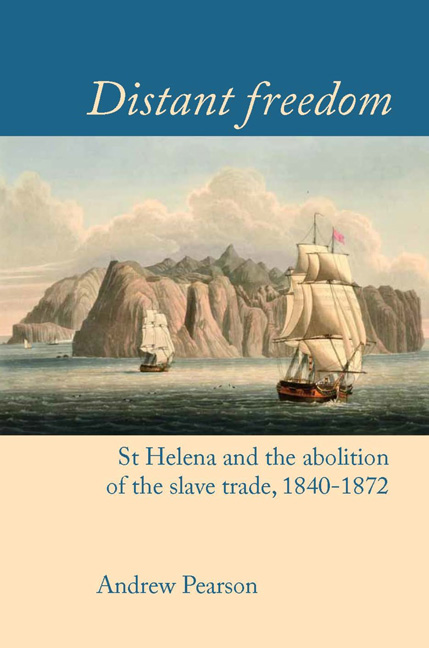Book contents
- Frontmatter
- Dedication
- Contents
- Figures
- Tables
- Acknowledgements
- Introduction
- Map
- 1 A Place of Immense Advantage
- 2 London and Jamestown
- 3 Sailortown
- 4 Life and Death in the Depots
- 5 ‘All, all, without avail’
- 6 After ‘Liberation’
- 7 Island Lives
- Conclusion
- Appendix 1 Liberated Africans Captured aboard Slave Ships: Cases Tried at Freetown, Luanda, Cape Town and St Helena, 1836–68
- Appendix 2 Prizes Adjudicated by the Vice-Admiralty Court of St Helena
- Appendix 3 Liberated African Emigration from St Helena
- Appendix 4 Emigrant Voyages from St Helena
- Bibliography
- Index
Introduction
- Frontmatter
- Dedication
- Contents
- Figures
- Tables
- Acknowledgements
- Introduction
- Map
- 1 A Place of Immense Advantage
- 2 London and Jamestown
- 3 Sailortown
- 4 Life and Death in the Depots
- 5 ‘All, all, without avail’
- 6 After ‘Liberation’
- 7 Island Lives
- Conclusion
- Appendix 1 Liberated Africans Captured aboard Slave Ships: Cases Tried at Freetown, Luanda, Cape Town and St Helena, 1836–68
- Appendix 2 Prizes Adjudicated by the Vice-Admiralty Court of St Helena
- Appendix 3 Liberated African Emigration from St Helena
- Appendix 4 Emigrant Voyages from St Helena
- Bibliography
- Index
Summary
In October 1840, few people on the remote Atlantic island of St Helena were giving any thought to the abolition of slavery. true, a vice-admiralty court had recently been established in the capital, Jamestown, and this had already pronounced judgement on a small number of slave ships, condemning them to be broken up and sold. Sailors of the Royal Navy's West Africa Squadron roamed the streets of the capital and spent money in its taverns, rubbing shoulders with the crews of slaving vessels who also loitered in the town, immune from prosecution but too poor to buy their passage home. to the south, out of sight and mind, the human traffic of the slave trade was also present: a few tens of Africans sequestered in the isolated beauty of Lemon valley.
Instead, all attention was focused on Napoleon, whose exile on the island from 1815 until his death in 1821 was – and still remains – St Helena's enduring claim to fame. The former emperor's remains had been buried in a plain tomb in the secluded Sane valley, far removed from Europe and the scene of his military triumphs. Previous plans to retrieve his body had come to nothing, but in May 1840 they were revived by Adolphe Thiers, the new Président du Conseil under King Louis Philippe, seeking their return as a grand political coup de théâtre.
Accordingly, on 8 October, the frigate la Belle Poule and its escort la Favorite arrived at Jamestown harbour following a stately cruise of some three months from Toulon, via Spain, Madeira, Tenerife and Brazil. Commanded by the Prince de Joinville, Louis Philippe's third son, the mission was accompanied by a host of minor aristocracy and other dignitaries, including several of those who had been companion to Napoleon during his years of exile.
The St Helenians had been given several months’ forewarning of this event, which was anticipated with much excitement. Over the next week, Jamestown's society – so often starved of novelty and for whom calls by royalty were extremely rare – was mesmerised by these prestigious guests. The St Helenians had been given several months’ forewarning of this event, which was anticipated with much excitement. Over the next week, Jamestown's society – so often starved of novelty and for whom calls by royalty were extremely rare – was mesmerised by these prestigious guests.
- Type
- Chapter
- Information
- Distant FreedomSt Helena and the Abolition of the Slave Trade, 1840–1872, pp. 1 - 11Publisher: Liverpool University PressPrint publication year: 2016



